- Home
- Michael Phillips
Angel Harp: A Novel
Angel Harp: A Novel Read online
ANGEL HARP
A Novel
MICHAEL PHILLIPS
Begin Reading
Table of Contents
Copyright Page
To
Stanley Jenkins,
God’s man.
Preface
Whenever one is blending fact and fiction, certain disclaimers and clarifications are necessary. Though my wife, Judy, might be said to be the “inspiration” behind a book about a harpist and harp teacher, this is not a story about her or anyone else. Everything that follows is fiction, the characters, the villages, the church, the relationships, the plot. While the setting of the story is reasonably true to the region of the Moray coast where Judy and I stay part of the year, most of the place names have been changed (and others retained) to reflect the fact that, after all is said and done, this is fiction, which requires adaptation even when based on reality. Those familiar with the region will recognize the location and layout of Castle Buchan as clearly distinct from Cullen House, upon which it is based, as are the local roads and certain other geographic details of the story. For reasons of my own, I placed the fictional “Castle Buchan” a bit closer to the Home Farm. That change required that the Home Farm be moved as well. I also took the liberty of slightly rerouting the A98, which I hope the road planners of Moray and Grampian won—t mind. Experienced readers of fiction have no difficulty interweaving fact and fiction in this manner, having thorough acquaintance with the phrase “loosely based upon” as an undergirding principle of both historical and contemporary fiction. I clarify these points, however, for the sake of those readers for whom the taking of such literary liberties may be unfamiliar, and especially for our dear friends in Cullen and Portknockie.
An intriguing historical footnote may be of some interest. The real Buchan Castle—built in approximately 1574 two miles east of the town of Macduff at the site of the former farmhouse called “Mains of Cullen”—was known by its official name, Castle of Cullen of Buchan. It was subsequently destroyed and nothing remains. What the historic connection is between “Cullen” and “Buchan” at this site east of Macduff I do not know. But perhaps the memory of the “Castle of Cullen of Buchan” can live on through this fictionalized story. Though there are some dozen current dukedoms in Scotland, the “Duke of Buchan” is an entirely fictional peerage.
About the characters, to use another phrase common in the fiction world, “any resemblance to real individuals living or dead is purely coincidental.” The only actual person who might be found in the following pages is me. Judy often says that all my characters are me! Whether that is true in this present case, I am probably the least able to tell for certain. Though here and there I may employ the names of friends just for fun, the main characters are not based on any real individuals, “living or dead”!
A couple of final words… The use of the local “Doric” reflects the fact that most of the book was written in Scotland with an eye toward publication in that country. For American readers who find the dialect difficult at first, I would encourage you not to lose heart. As many have discovered with the occasional Scots dialect in the writings of George MacDonald, I am sure you will find yourself enjoying it soon enough.
As I write for readers in both the U.S. and the U.K., it probably cannot be helped that there will remain some spelling incongruities for one audience or the other (neighbor/neighbour). Though we try to catch these for the different American and British publications, I hope it will not cause too many bumps in the road where we miss them. A “Scots Glossary” is included at the end of the book to help those unfamiliar with the Doric dialect with some of its more commonly used words.
Michael Phillips
Cullen, Scotland
Eureka, California
Chapter One
Dreams
By yon bonnie banks, and by yon bonnie braes,
Where the sun shines bright on Loch Lomond,
Where me and my true love were ever wont to gae
On the bonnie, bonnie banks o’ Loch Lomond.
O ye’ll tak’ the high road and I’ll tak’ the low road
An’ I’ll be in Scotland afore ye:
But me and my true love will never meet again
On the bonnie, bonnie banks o’ Loch Lomond.
—“Loch Lomond”
It is a terrible thing when dreams die.
I haven’t cherished many dreams in my life. My dreams were quiet and personal. I usually thought of myself as a relatively simple person. I didn’t care about changing the world or being rich, or even for that matter having a fancy home. I could have been content most anywhere.
Everyone wants to be happy, I suppose. I don’t know if I would call that a dream.
There were a few things I had dreamed of, being loved by a good and worthy man and loving him in return, having children and raising them and loving them and being loved by them, growing old with my husband and watching our sons and daughters mature and blossom and raise children of their own. But one by one those dreams had been taken from me.
My husband is gone now. The circumstances aren’t important. At least I don’t want to dwell on them. They’re too painful. Suffice it to say he is gone.
We had planned to have children, of course, but kept putting it off. First it was the money problems of newlyweds… thinking we needed a bigger house before starting a family… my husband’s career… my own part-time work.
Suddenly years slip by. My husband died and there were no children.
I wasn’t particularly old when I found myself alone, only thirty-four. Not even past my prime, as they say. But it’s old enough to feel old if it comes before you’re ready for it.
My friends told me I needed to get out, to see people, to start “dating” again. What a horrible thought! I could hardly imagine it. Good heavens, I already had a gray hair or two. My hair was either dark blond or light brown, whatever you want to call it, so it hid the occasional grayish strand pretty well. But I knew they were there. I also knew what they meant—that the clock of life kept ticking and I wasn’t a teenager anymore.
It isn’t as if a single woman, a widow—gosh, what a thing to call myself at thirty-four!—can just snap her fingers and suddenly find a line of eligible, successful, sensitive, handsome, nice men in their mid to late thirties lining up at her door. It doesn’t happen that way. I had never considered myself that good-looking. I know men judge differently, but when I looked in the mirror I couldn’t rate my looks at more than three-and-a-half or four.
Maybe four-and-a-half.
And when did four-and-a-half turn heads? Ten is the standard in our world.
I’d been told I had a nice smile, but it hadn’t been seen much lately. The people at church told me I ought to go to the singles group. That prospect sounded as bad as dating. Sitting around with a bunch of twenty-somethings noodling on guitars, or with thirty-somethings checking each other out, obviously “looking”—no thanks.
I’m not exactly sure how the next few years passed. If time flies when you’re having fun, it somehow also goes by when you’re not. I continued to work half-days as a teacher’s aide and threw myself into my music. Once a week I drove four hours for a lesson with the harpist I had studied under when I first took up Celtic music years before. I occasionally lugged my small harp to my second-grade class. From that a few private lessons resulted when parents called to ask if I would teach their children on a more regular basis. And when asked to play for weddings or garden parties or to provide background music for a social event or mixer, I usually accepted.
Over the years my little harp studio grew. I added students, then also gradually added harps until I had six in all.
It is hard to describe the personal bond
a harpist feels with his or her favorite instrument. A harp is part of your very soul. Even though I had six harps, they were all favorites, for different reasons. Of course my big pedal harp, a Lyon & Healy 15, which I called the Queen, was the most majestic of the six. But my black twenty-six-string Dusty Strings my father had given to me for a birthday years before was perhaps the most special of all. After my husband died I named it “Journey.” I don’t know why—I hadn’t called it anything before that. But a day after the funeral, realizing that this small harp had been with me for a long time and had been through a lot with me, I just started calling it Journey.
I had four other harps as well, two thirty-four-string harps called Aida and Shamrock, which I called by their model names. Then I had two small lap or ballad harps—a very small twenty-two-string Irish harp made by Walton which I called the Ring, and a twenty-six-string harp my husband had made from a kit, called the Limerick.
There is a story behind the Walton “Ring.” When my husband proposed to me, knowing of my love for the harp, he asked me, “Would you like a diamond ring, or a harp some day?”
I’m no fool. I knew which cost more… by about ten to one. I chose the harp!
So as an “engagement ring” of sorts, he ordered the little ballad harp from Walton in Ireland, had it shipped to us in Canada, and surprised me with it before we were married. Hence, the name.
Five years later we were able to buy the Queen from another local harpist who had decided to sell it, and pay her over several years. Otherwise, at that time in our lives we would never have been able to afford a large pedal harp. We made the final payment just three months before my husband died. I had my two “rings”—the Ring and the Queen—but my husband was gone.
The other harps had come along gradually as I began to give more and more lessons.
What does one person need with six harps? I can imagine someone wondering.
For weddings and parties and church services I nearly always played on my pedal harp. Its sound was so full and large and rich it could fill a cathedral. That was the sound you needed on such occasions. And for outdoor garden receptions or open-air weddings, you needed large volume such that would carry without acoustics helping magnify the sound.
But obviously you couldn’t wheel a sixty-nine-inch-tall, eighty-pound harp into a hospital room. My Dusty Strings portable level harp suited that purpose perfectly. I could carry it in its case with one hand, and it had a rich and vibrant tone that could easily fill a large room.
For my own purposes, the Queen and Journey would have been all I needed… along with my sentimental favorite—the Ring!
If you plan to give harp lessons, however, your students have to have something to play and practice on. Some people bought harps. But it is a huge financial commitment for someone to make before they are absolutely certain their initial love for and fascination with the instrument are going to last long enough to justify it. So I used the four others for loaners and rentals—the two larger student-size harps for older children and adults, the two ballad harps for younger children.
I loved teaching children to play the harp. That was the bright spot in my life. But was it enough in itself to give the rest of my drab existence meaning?
Turning forty didn’t exactly wake me out of my lethargy. At first it just stunned me.
Forty! Good heavens, am I really forty? I thought.
Not that forty is really very old either. There are millions to whom forty would sound pretty good. But if you’ve never been forty, it’s a milestone that means you’re not young anymore. The years are beginning to tick by ever more steadily. Whenever that indefinable thing called one’s “prime” is, anyone can be excused at forty for pausing to wonder if it passed by without their knowing it.
At first I became dreadfully depressed. If ever I’d had the chance to marry again, I had just wasted half my thirties doing nothing about it.
Gradually that phase faded. Then I went through a period of trying to deal with it by forcing myself to look the cold hard facts in the eye and accept them like a grown-up and quit being a crybaby. Every day I told myself, “You are forty, you are a widow, you are middle-aged, you have more gray than you can safely keep plucking out, you are going to live the rest of your life alone. Deal with it.”
That was more depressing than telling myself I had just wasted six years! I quickly gave up that tactic, too. Even if my you’re-getting-old mantra was true, I didn’t have to keep reminding myself.
A day came I’ll never forget, though I wouldn’t mind forgetting it. It was a nondescript Sunday in November—gray, threatening rain, cold, dreary. I had nothing to do, nowhere to go. There were no lessons scheduled. I saw nobody. As dusk began to fall about five-thirty that afternoon, I realized the whole day had gone by and I’d not seen another soul all day. I was sitting on the couch of my living room, and from out of nowhere I just started to cry. For no reason, I just began to cry.
The sad truth had finally hit home that I was lonely. I was alone in the world… and it felt awful.
I cried myself to sleep on the couch, woke up about ten in pitch black, cold and hungry, and dragged myself to bed.
A week or two later I had a dream. I mean an actual dream, at night in my sleep.
I think my husband was the focus of it, but I can’t remember. It’s not important. You know how sometimes you have dreams and the story of the dream, if you want to call it that, fades but the feelings it arouses remain with you. This was one of those.
I woke up crying. The words were ringing in my head: Don’t let me die, don’t let me die.
I was so sad and lonely at that moment. Strange to say, I felt even lonelier than after I realized I would never see my husband again. I just lay in the dark and sobbed and sobbed until I could sob no more.
Finally I got up and went to the bathroom, blew my nose, splashed my face with cold water and tried to take a deep breath, then went back to bed. I turned the wet pillow over and lay down on my back and just stared up at the ceiling of my bedroom in the darkness.
The words didn’t go away.
Don’t let me die, don’t let me die.
As I had returned to wakefulness a few minutes earlier, with fleeting phantasms of my husband evaporating like mist from my brain, I had the sense that he was calling out for me to help him, that I might somehow have been able to save him. No wonder such an uncontrollable sadness flooded over me. It was like blaming myself all over again for what had happened.
But gradually I realized that it wasn’t my husband speaking at all. It was the dream itself. The dream was saying, “Don’t let me die.”
I had no idea what it meant.
After an hour or so, I began to doze. When I next came to myself, light was visible behind the curtains of my bedroom. It was morning.
Almost the moment I opened my eyes, again came the words from the middle of the night, though now slightly changed: Don’t let the dream die.
I got out of bed and threw back the curtains. Yesterday’s rain had passed and a brilliant pink-and-orange sunrise greeted me.
And I knew that it was indeed a terrible thing when dreams died. I had given in to lethargy and despondency and loneliness. I had let hope slip away. I had allowed my dreams to fade.
As I stood looking out on that bright sunrise, I thought to myself that maybe it wasn’t too late.
Some of my dreams were gone forever. I could never get my husband back.
But I could not let them all die. There were still dreams worth dreaming.
Chapter Two
Bringing a Dream to Life
O sing tae me the auld Scotch sangs, i’ the braid auld Scottish tongue.
The sangs my father loved to hear, the sangs my mither sung,
When she sat beside my cradle, or croon’d me on her knee.
An’ I wadna sleep, she sang sae sweet, the auld Scotch sangs tae me.
An’ I wadna sleep, she sang sae sweet, the auld Scotch sangs tae me.
&nb
sp; Sing ony o’ the auld Scotch sangs, the blithesome or the sad,
They mak’ me smile when I am wae, and greet me when I am glad.
My heart goes back to auld Scotland, the saut tear dims my e’e,
And the Scotch blood leaps in a’ my veins, as ye sing the sangs tae me.
And the Scotch blood leaps in a’ my veins, as ye sing the sangs tae me.
—“The Auld Scotch Sangs”
New beginnings start one step at a time.
That day after my dream, the day of the sunrise, I made a decision. That sounds like a small thing. In fact, it’s the most important thing in life anyone ever does. Making decisions is hard. You have to summon something from deep inside that… well, that takes courage in a way. I don’t know whether I’d made a decision—a real, conscious, look-it-in-the-eye-and-decide decision—in years. I mean the kind of decision that might really make a difference, might change the course of your life in some way. No one can see the future, so you can’t know. That’s why decisions take courage. You can’t see where they might lead. But I made one then, and it feltgood.
I decided that on that day I would take one step toward one dream.
Maybe just a small step. But I would take some step, whatever it was, toward a future that I had some say in myself. Maybe nothing would come of it. But I would do it anyway. Prime or no prime, I wasn’t going to sit around marking time while any more empty years floated past and left me behind. Life was too precious to let it drift along. I wasn’t going to let life just randomly happen, taking the easiest path at every fork in the road. I was going to set my hand to the rudder, as they say, and make some of my own decisions about where I went.
When you let your dreams die, however, you also lose your ability to dream. You don’t only lose the dreams themselves, you stop dreaming altogether. You forget that it’s possible to dream, and that life’s dreams are good things. After making what I call a decision, I found I couldn’t even think of a dream I wanted to do something about. That scared me. Had I really sunk so low?

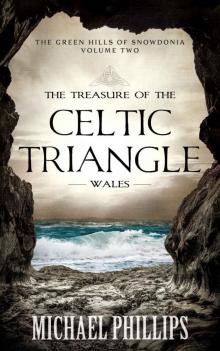 The Treasure of the Celtic Triangle- Wales
The Treasure of the Celtic Triangle- Wales From Across the Ancient Waters- Wales
From Across the Ancient Waters- Wales Hell & Beyond
Hell & Beyond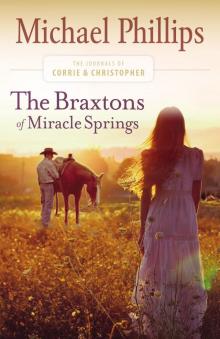 The Braxtons of Miracle Springs
The Braxtons of Miracle Springs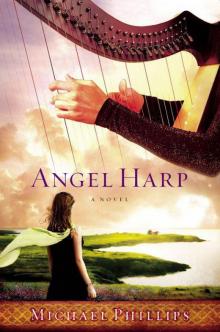 Angel Harp: A Novel
Angel Harp: A Novel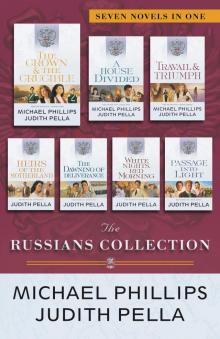 The Russians Collection
The Russians Collection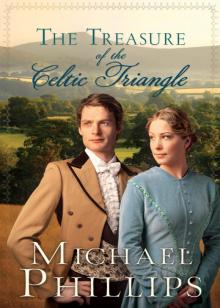 Treasure of the Celtic Triangle
Treasure of the Celtic Triangle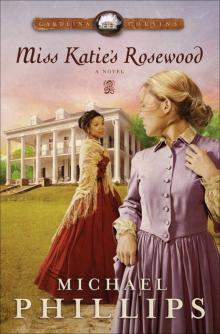 Miss Katie's Rosewood
Miss Katie's Rosewood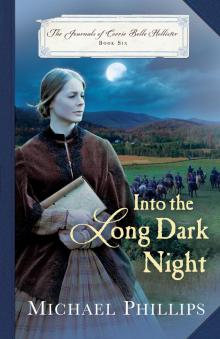 Into the Long Dark Night
Into the Long Dark Night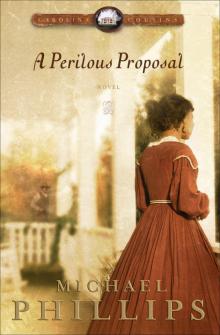 A Perilous Proposal
A Perilous Proposal A Place in the Sun
A Place in the Sun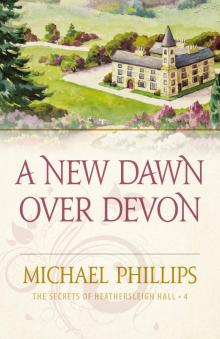 A New Dawn Over Devon
A New Dawn Over Devon Shadows over Stonewycke
Shadows over Stonewycke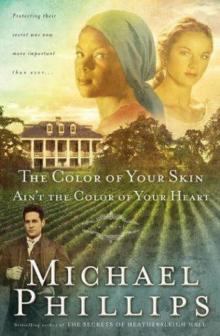 The Color of Your Skin Ain't the Color of Your Heart
The Color of Your Skin Ain't the Color of Your Heart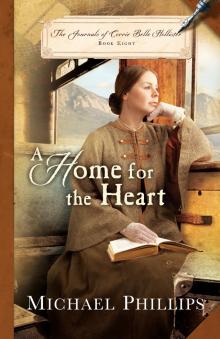 A Home for the Heart
A Home for the Heart A New Beginning
A New Beginning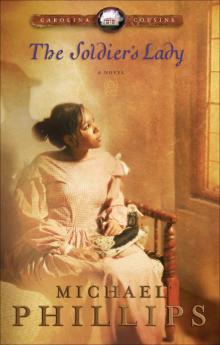 The Soldier's Lady
The Soldier's Lady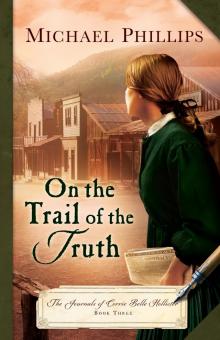 On the Trail of the Truth
On the Trail of the Truth Robbie Taggart
Robbie Taggart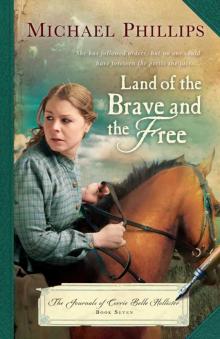 Land of the Brave and the Free
Land of the Brave and the Free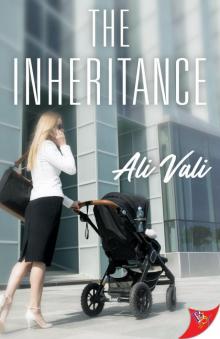 The Inheritance
The Inheritance The Treasure of Stonewycke
The Treasure of Stonewycke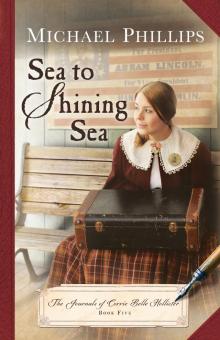 Sea to Shining Sea
Sea to Shining Sea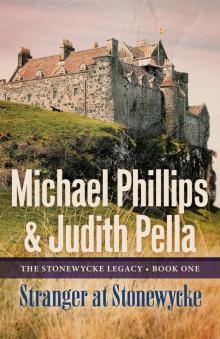 Stranger at Stonewycke
Stranger at Stonewycke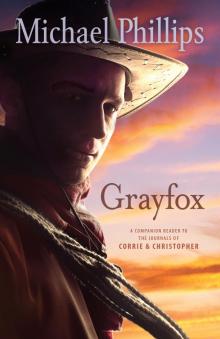 Grayfox
Grayfox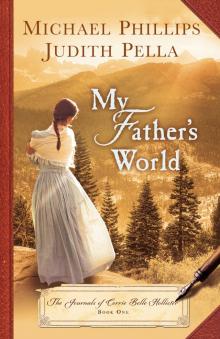 My Father's World
My Father's World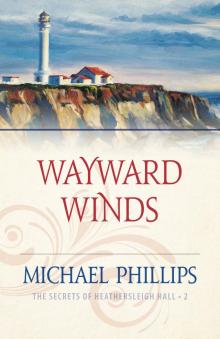 Wayward Winds
Wayward Winds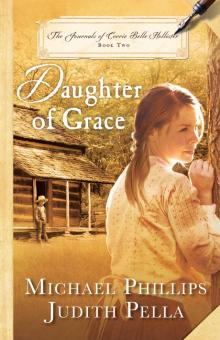 Daughter of Grace
Daughter of Grace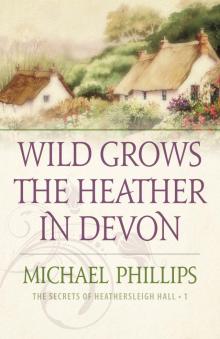 Wild Grows the Heather in Devon
Wild Grows the Heather in Devon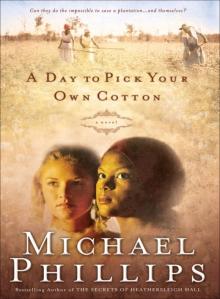 A Day to Pick Your Own Cotton
A Day to Pick Your Own Cotton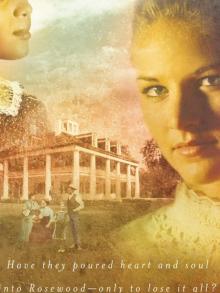 Together is All We Need
Together is All We Need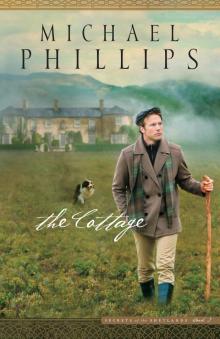 The Cottage
The Cottage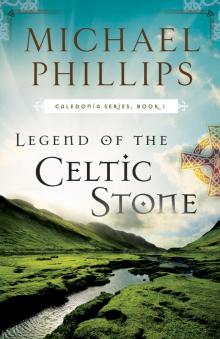 Legend of the Celtic Stone
Legend of the Celtic Stone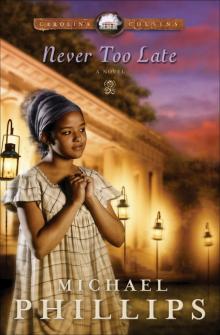 Never Too Late
Never Too Late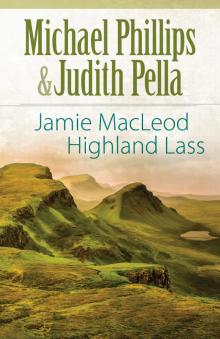 Jamie MacLeod
Jamie MacLeod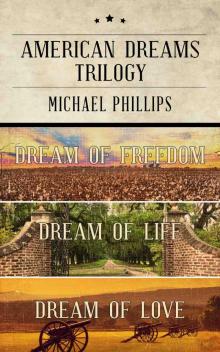 American Dreams Trilogy
American Dreams Trilogy Heather Song
Heather Song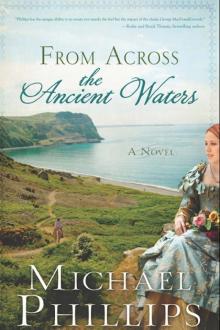 From Across the Ancient Waters
From Across the Ancient Waters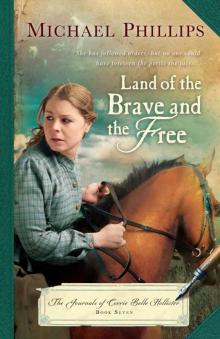 Land of the Brave and the Free (Journals of Corrie Belle Hollister Book 7)
Land of the Brave and the Free (Journals of Corrie Belle Hollister Book 7)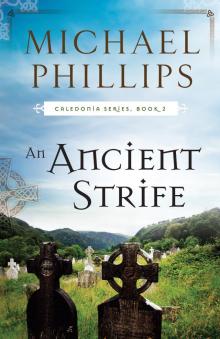 An Ancient Strife
An Ancient Strife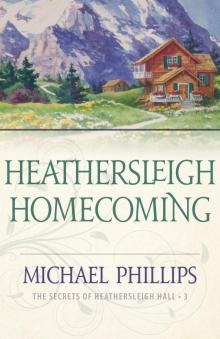 Heathersleigh Homecoming
Heathersleigh Homecoming